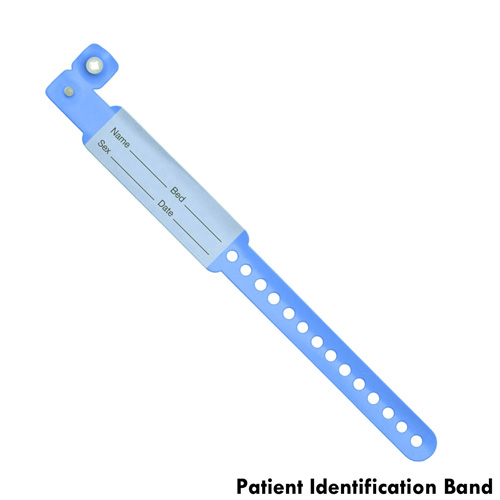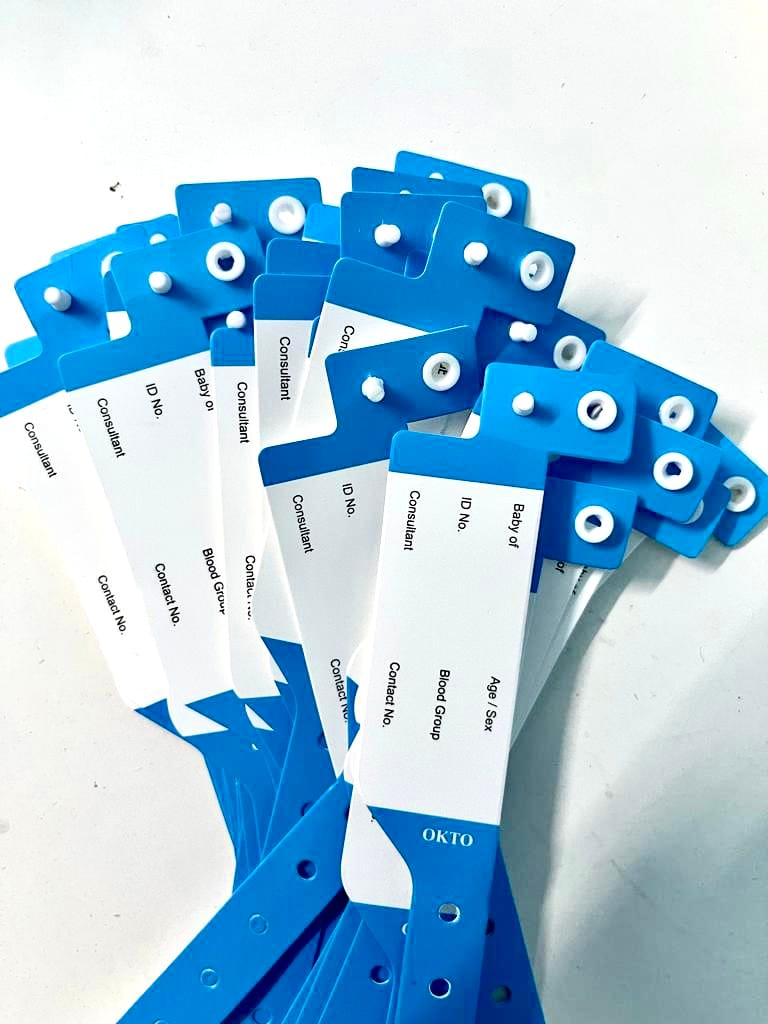Patient Identification Band: A Necessary Device for Every Healthcare Provider
Patient Identification Band: A Necessary Device for Every Healthcare Provider
Blog Article
Enhancing Security: The Relevance of Client Recognition Bands in Medical Care
In the realm of medical care, the efficacy of individual recognition bands can not be overstated, as they work as a fundamental secure against misidentification and subsequent errors. These bands, frequently ignored, have crucial information that is important for making certain patient security and ideal therapy outcomes. However, the implementation of effective recognition methods poses a number of difficulties that doctor should browse. As we discover the complex duty of these bands, it becomes apparent that their importance extends beyond mere identification, questioning regarding ideal techniques and future technologies in person safety and security.
Review of Patient Recognition Bands
Individual identification bands play an essential role in ensuring the safety and security and accuracy of individual care in healthcare setups. These bands, usually endured the wrist or ankle joint, function as a critical device for validating patient identity, therefore lessening the risk of mistakes in treatment, drug administration, and various other medical care treatments. Made from resilient products, client recognition bands commonly include crucial information such as the person's name, date of birth, clinical record number, and barcodes or QR codes for scanning.
The execution of client recognition bands is vital in different healthcare environments, including hospitals, outpatient centers, and long-term care establishments. They add to a methodical strategy in client administration, enabling healthcare experts to promptly and accurately identify individuals, especially in high-pressure circumstances where quick decision-making is essential.
In addition, the use of these bands is aligned with governing criteria focused on enhancing patient safety - Patient Identification Band. By making certain that each patient's information is easily verifiable and readily easily accessible, medical care suppliers can preserve a high requirement of care, decrease the incidence of adverse occasions, and foster a culture of safety within healthcare establishments
Advantages of Accurate Recognition
Precise identification is essential to improving client safety and care top quality in medical care settings. It acts as the initial line of defense against mistakes that might lead to adverse person results. By guaranteeing that each client is correctly identified via trustworthy ways, such as patient recognition bands, doctor can significantly lessen the risk of misidentification, which can cause unsuitable treatments, drug errors, and also surgical mix-ups.
Moreover, exact client recognition assists in efficient communication amongst healthcare groups. When all employee can consistently determine patients, they can share critical info much more successfully, resulting in far better coordination of care. This is specifically important in emergency situation situations where prompt treatments are essential.
In addition, accurate identification sustains compliance with regulative standards, consequently reducing the danger of lawful effects for healthcare facilities. It cultivates trust between individuals and doctor, as patients feel much more safe understanding that their identifications are being safeguarded.

Typical Challenges Encountered
Making sure efficient patient recognition in healthcare setups presents a series of difficulties that can jeopardize safety and security and care top quality. One considerable difficulty is the irregularity in client populations. Individuals might arrive in a state of complication or distress, making accurate identification hard. Furthermore, language obstacles can hinder efficient interaction, making complex the verification process.
Another difficulty is the dependence on human factors in identification procedures. Health care specialists might inadvertently forget or misunderstand recognition methods, specifically in high-stress settings such as emergency situation divisions. This can bring about errors, including the administration of inaccurate therapies or medicines.
Technological concerns also position challenges. Electronic wellness document (EHR) systems are made to enhance individual identification, system interruptions or individual errors can interfere with the process. In addition, the physical layout of person ID bands can bring about readability problems, particularly in cases where bands are harmed or covered.
Lastly, inconsistent training among staff pertaining to identification protocols can cause spaces in expertise and method. Dealing with these difficulties is vital for enhancing website here patient safety and security and guaranteeing that recognition bands offer their designated objective properly.
Best Practices for Application
To properly apply patient recognition bands in healthcare settings, organizations have to adopt a complex technique that prioritizes standardization, modern technology, and training combination. Standardization involves establishing clear methods for the style, application, and use of recognition bands throughout all departments. This makes sure uniformity and reduces the risk of errors linked to variations in band kinds or identifying methods.


Training is crucial for all health care staff to guarantee they comprehend the significance of precise patient recognition, exactly how to effectively use and read recognition bands, this and the procedures to comply with in case of inconsistencies. Regular workshops and correspondence course can enhance this knowledge and advertise a culture of security.
Technology assimilation plays an essential role in boosting the effectiveness of individual recognition bands. Using barcode scanning or RFID modern technology can improve the recognition procedure, enabling real-time confirmation of person identities. Furthermore, digital health and wellness record systems should be set up to include alerts for mismatches in between the recognition band and patient data.
Future Trends in Individual Safety And Security
As healthcare remains to progress, the emphasis on patient safety and security is most likely to magnify, driven by improvements in modern technology and a greater understanding of systemic threats. Emerging fads indicate a change towards more integrated systems that take advantage of information analytics, artificial knowledge, and device understanding to improve patient identification procedures. These technologies can help identify potential security problems before they intensify, thus minimizing mistakes associated with misidentification.
Furthermore, the execution of blockchain modern technology might transform how patient data is securely shared among health care providers, ensuring that recognition bands are consistently exact and updated. This will certainly not just enhance patient safety yet additionally assist in seamless communication across multidisciplinary groups.

On top of that, the growing concentrate on individualized medication is anticipated to influence individual safety and security protocols. By integrating demographic and genetic details right into recognition systems, health care specialists can tailor therapies better, minimizing the risks of unfavorable reactions due to misidentification.
Conclusion
In verdict, individual identification bands offer as a crucial component in enhancing safety within medical care environments. Ultimately, the continued emphasis on durable recognition procedures will add to better individual results and general safety and security Patient Identification Band in healthcare settings.
In the world of healthcare, the efficiency of individual recognition bands can not be overstated, as they offer as an essential protect against misidentification and succeeding mistakes.Person identification bands play an important role in ensuring the safety and precision of patient care in medical care settings. Made from durable products, individual identification bands often include crucial details such as the individual's name, date of birth, clinical document number, and barcodes or QR codes for scanning.
By guaranteeing that each individual is properly identified via trusted methods, such as person recognition bands, healthcare companies can considerably minimize the risk of misidentification, which can lead to improper therapies, drug mistakes, and even medical mix-ups.
In final thought, client identification bands offer as an important component in improving safety within health care atmospheres. Patient Identification Band.
Report this page